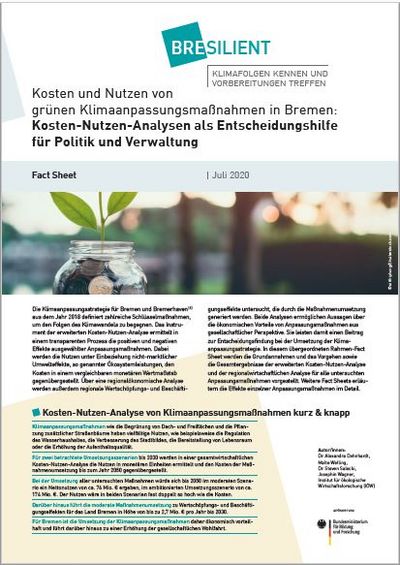Costs and benefits of green climate adaption measures in Bremen: Cost-benefit-analyses as a decision-making support for politics and administration
The climate adaptation strategy for Bremen and Bremerhaven from 2018 defines numerous key measures to counter the consequences of climate change. The instrument of the extended cost-benefit analysis (CBA) determines the positive and negative effects of selected adaptation measures in a transparent process. In this process, the benefits, including non-market environmental effects, so-called ecosystem services (ESL), are compared to the costs in a comparable monetary value scale. In addition, a regional economic analysis is used to map regional value-added and employment effects generated by the implementation of measures. Both analyses allow statements to be made about the economic benefits of adaptation measures from a societal perspective. They thus contribute to decision-making in the implementation of the climate adaptation strategy.
This fact sheet presents the basic assumptions and procedure as well as the overall results of the extended cost-benefit analysis and the regional economic analysis for the investigated green adaptation measures in two considered scenarios. The results show that for Bremen, the implementation of climate adaptation measures is economically beneficial: the benefits would be almost twice as high as the costs in both scenarios by 2050.
Further fact sheets explain the effects of the green adaptation measures 'green roofs and open spaces' and 'street trees' in detail.



